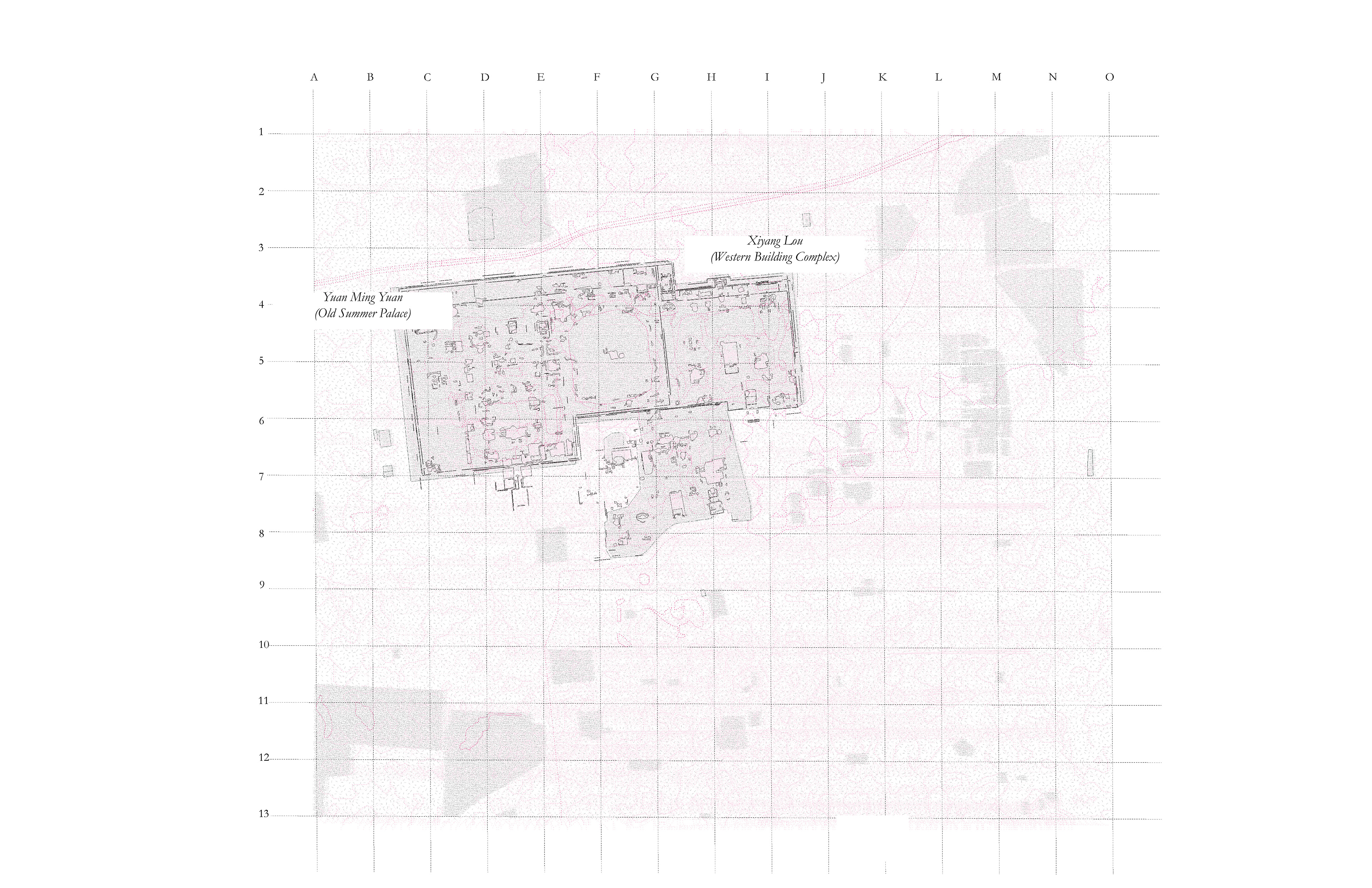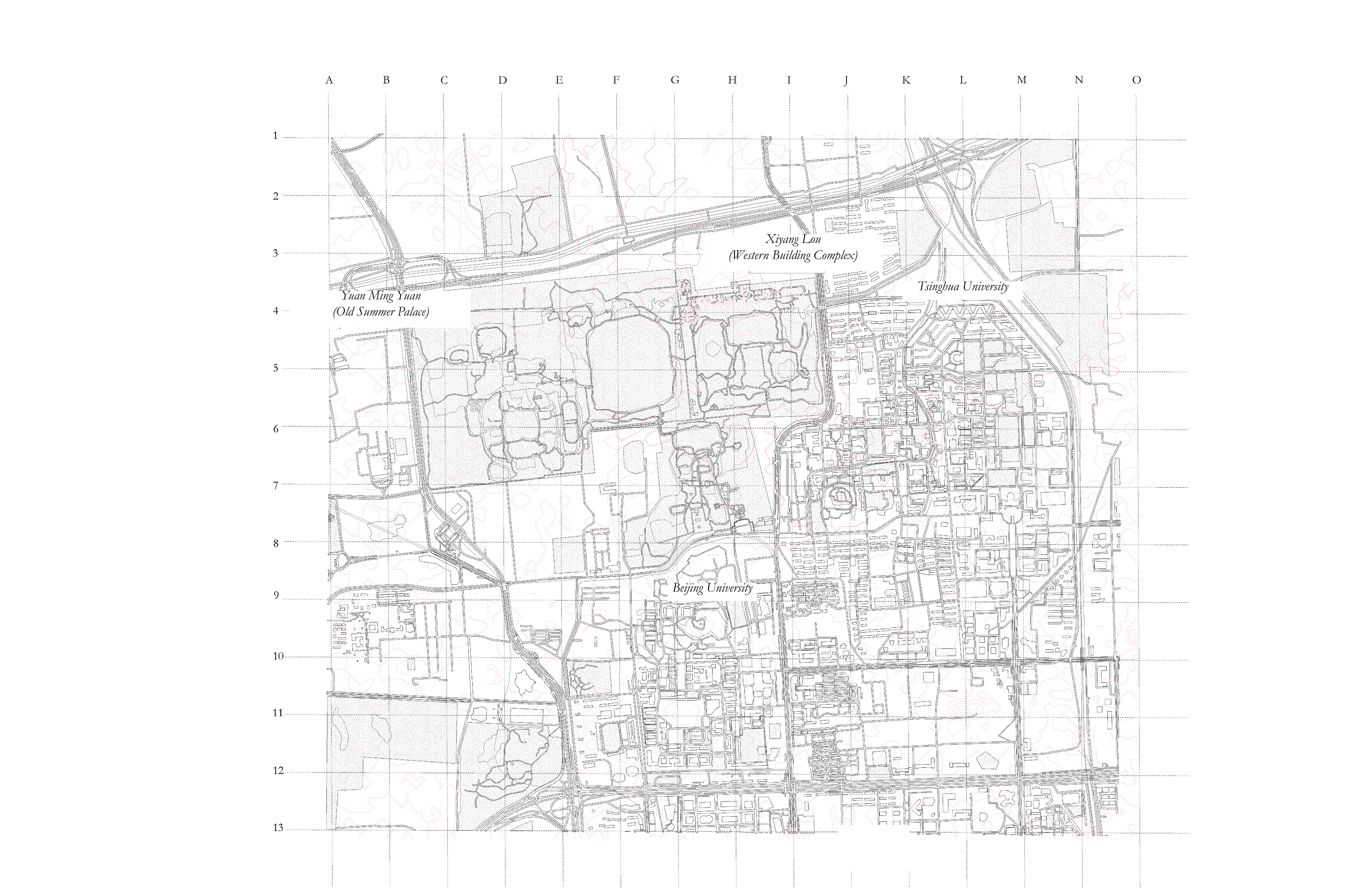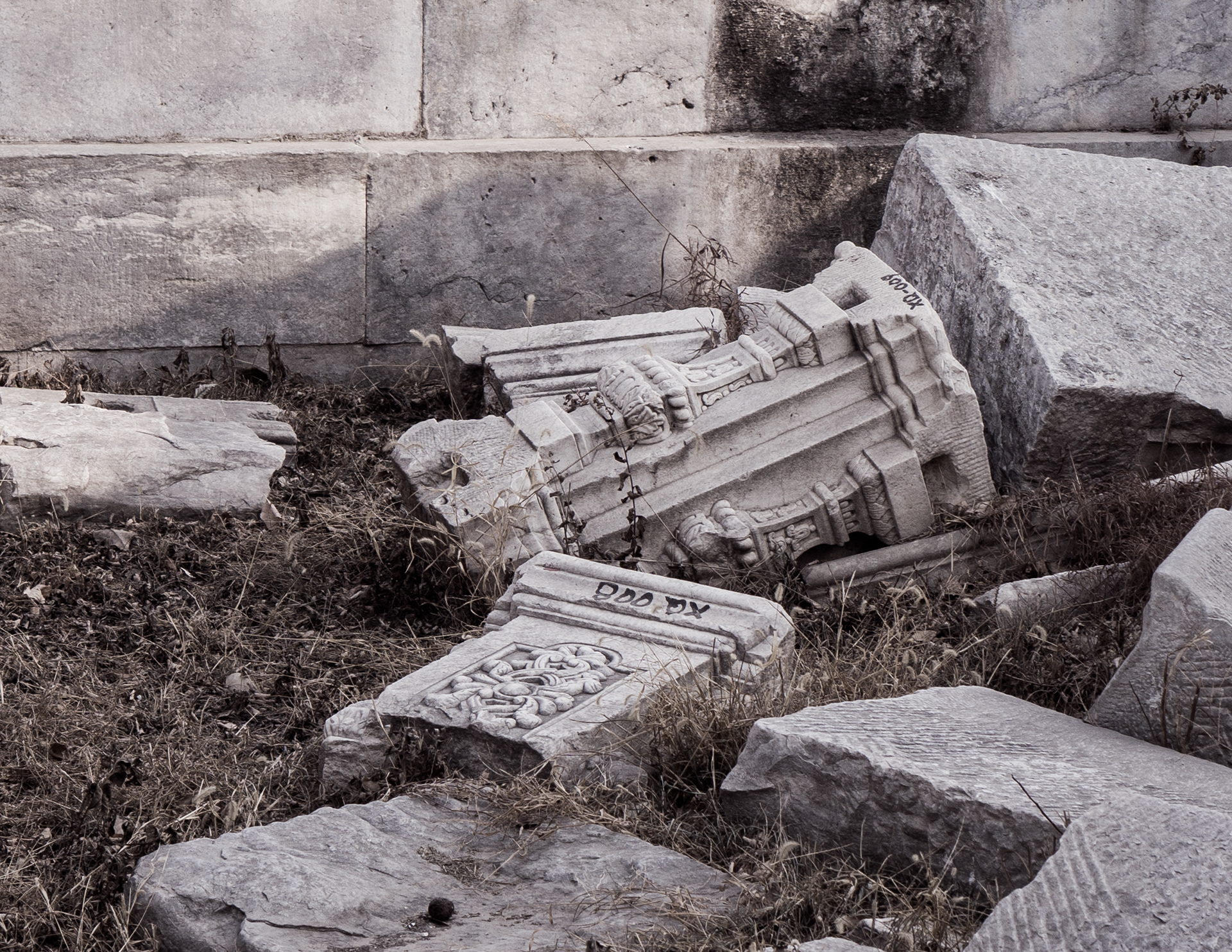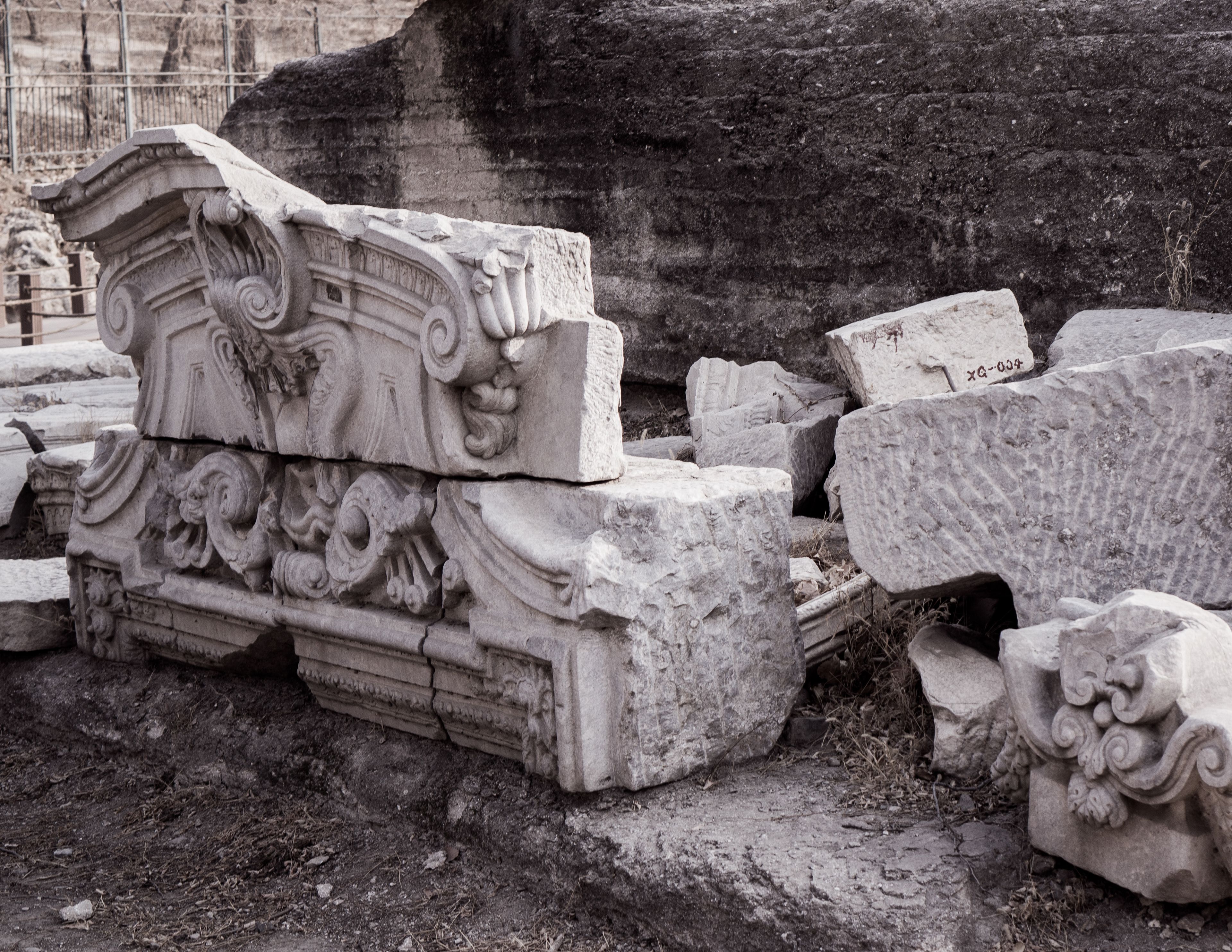B.Arch Thesis Syracuse University, 2019
Awarded Dean's Citation for Excellence in Thesis Design
Awarded Crown Wise-Marcus Research Grant
Advisors: Prof. Anne Munly & Maya Alam
Secondary Advisors: Molly Hunker, Amber Bartosh
This thesis puts forward the provocation to employ spoliation as a form of preservation and as a tool of locus making and identity mediation. This is done by syncretizing architectural artifacts and remnants from different timelines, oscillating between operations of defamiliarization and memorialization. This thesis explores its contention on a site of contested memory, where the idea of reclaiming cultural ownership is done through a formal and spatial spoliation. The artifacts ‘on site’ and ‘off site’ are relayed through different mediums and parameters of resolution and syncretization.
In this thesis, Spolia* is defined as found artifacts or materials with ingrained place identities that are repurposed into new building matter in novel contexts. This includes architectural remnants or fragments from sites of historical ruins, urban derelicts, artifacts that are currently being displayed in museums, and artifacts that are translated between the digital and the physical.
This thesis will use artifacts both in their original and altered state. The artifacts’ form is spoliated and is gradually syncretized into a new container, creating a spectrum that deviates from the original. This is a response to the current state of the artifacts where, because they have been left to weather on-site, they have degraded from their original appearance. A reconstruction will merely devalue the work and will never achieve the level perfection of it when it was originally built. The goal of this project is not to bring back history, however, but to enable active engagement with the past in the present, while projecting forward.
mapping of peers and non-peers for 'speculative spoliation'
As artifacts come with the baggage of cultural and political heritage, it is crucial to determine what spolia, resolution and scale to reuse in the new context, allowing for a degree of legibility and familiarity to the original. In embedding the spolia or found artifacts in a new or existing container, techniques of syncretization and of containing the objects were explored, resulting in actions of infilling, stacking, layering, framing, aligning, distorting, blurring and using similar color and materials. These techniques were then tested on the spolia in order to achieve a degree of familiarity to both recognize its origin while allowing for alternate readings.


site map - yuan ming yuan, 1800 (left); site map - yuan ming yuan, today (right)






spolia of examination at Yuan Ming Yuan (Old Summer Palace), Xiyang Lou (Western Building Complex)
spolia catalogue On-Site - Yuan Ming Yuan (left); Off-Site - Victoria Albert Museum, London & Poly Art Museum, Beijing (right)
FORM
In the image study, the relationship between the container (coloured background) and the contained (marble plinth in two-dimension) is tested on a degree of syncretization and scale. Towards the right of the grid, the two-dimension marble plinth is fully assimilated or conflated with the coloured background. Towards the bottom of the grid, the marble plinth loses its legibility and fidelity and result as traces of the original plinth.
In the object study the relationship between the container (coloured rectangle extrusion) and the contained (marble plinth) is similarly tested on a degree of syncretization and scale. Towards the right of the grid, the marble plinth is fully assimilated with the coloured rectangle extrusion on various resolution.
Drawing from the syncretization spectrum on the left, the object is further stretched and extruded into a wall while still testing the boundaries between the container and the contained. This process informs the thesis’ space-making process, stemming from an object.
physical model relay: additive manufacturing
physical model relay: plaster casting
casting process
SPACE
Parent Object - Object - Object-Wall - Wall - Wall-Room - Room - Room-Object
ORDER
thesis exhibition, may 2019, slocum hall, syracuse university
read more about Speculative Spoliation above
Gan, Amelia, "Speculative Spoliation: Spolia as an instrument of locus making & identity mediation" (2018). Architecture Thesis Prep. 415.
https://surface.syr.edu/architecture_tpreps/415